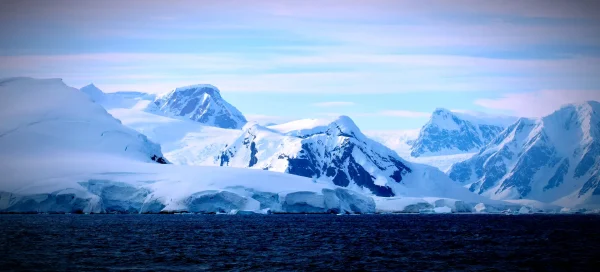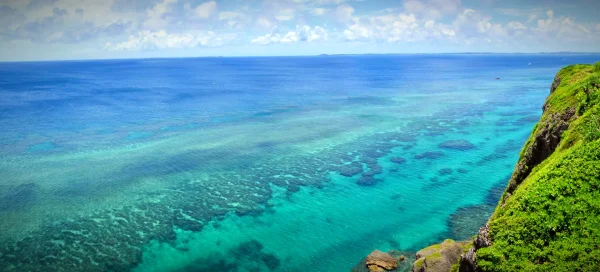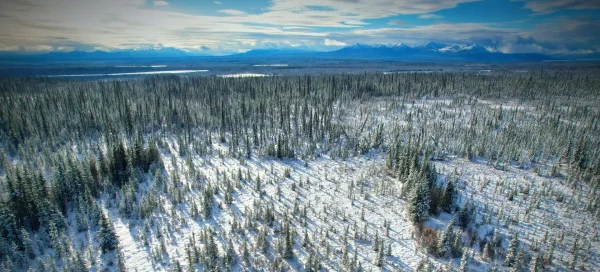Overview
The Red-breasted Goose (Branta ruficollis) is a strikingly beautiful bird known for its distinctive and vibrant coloration. This small goose species boasts a unique combination of black, white, and reddish-brown plumage. The bird’s most prominent feature is its rich, reddish-brown breast, which contrasts sharply with a white face and black crown and neck. Its compact body and short, dark bill add to its distinctive appearance.
Native to the Arctic regions of Europe and Asia, the Red-breasted Goose breeds in Siberia and winters in southeastern Europe. It primarily nests on the tundra near coastal estuaries and river deltas, migrating significant distances between its breeding and wintering grounds. These geese are highly social and are often found in large flocks, especially during migration and winter. They are known for their strong, fast flight and can be quite vocal, especially in groups.
Despite their beauty and the fascination they inspire, Red-breasted Geese face several threats to their survival, primarily habitat loss and degradation. Their breeding areas are vulnerable to oil and gas development, while their wintering grounds face agricultural expansion and disturbance threats. As a result, the species is considered Vulnerable by the International Union for Conservation of Nature (IUCN), emphasizing the need for international conservation efforts.
Taxonomy
Kingdom
Phylum
Class
Order
Family
Genus
Species
Type
Physical Description:
The Red-breasted Goose is a smaller goose species with a compact and robust body. It’s most notable for its striking plumage: a deep reddish-brown breast contrasting with a predominantly black and white body. The bird’s head is mostly black, with a conspicuous white patch around the base of the bill extending up the cheeks. The back and wings are primarily black, with white bars and spots, and the underparts are lighter, with varying shades of grey and white.
The short, dark bill and legs are well-suited to their feeding habits, which involve grazing on grasses and small plants. The Red-breasted Goose is graceful and strong in flight, with rapid wing beats. The species exhibits little sexual dimorphism, with males and females looking very similar, although males may be slightly larger on average.

Lifespan: Wild: ~15 Years || Captivity: ~20 Years

Weight: Male & Female: 2.9-4.4 lbs (1.3-2 kg)

Length: Male & Female: 20-24 inches (53-61 cm)

Wingspan: Male & Female: 45-50 inches (115-127 cm)

Top Speed: 50 mph (80 km/h) in flight
Characteristic:
Native Habitat:
The Red-breasted Goose breeds in Siberia’s high Arctic tundra, particularly along the Kara Sea, Yamal Peninsula, and Gydan Peninsula coastlines. Cold temperatures, short summers, and long, frigid winters characterize this remote and harsh environment. The landscape is a mix of barren tundra, wetlands, and coastal estuaries, providing the necessary resources for breeding and raising young.
In winter, they migrate to southeastern Europe, particularly the Black Sea coast in Bulgaria and Romania, and occasionally in Ukraine and northern Greece. Their wintering habitats are quite different from their breeding grounds, consisting of coastal lagoons, salt marshes, and agricultural fields. These areas provide a milder climate and ample food for survival during the non-breeding season.
Climate Zones:
Biomes:
Biogeographical Realms:
Diet:
Diet & Feeding Habits:
Red-breasted Geese are primarily herbivores, feeding on grasses, sedges, and small plants. During the breeding season in the Arctic tundra, they consume various tundra vegetation, including leaves, stems, and seeds of various plants. In their wintering grounds, they often feed in agricultural fields, consuming crops like wheat and barley, which can sometimes bring them into conflict with farmers.
Their feeding behavior is typically grazing while walking, but they may also upend in shallow water to reach food below the surface. Red-breasted Geese often feed in large flocks, providing safety in numbers from predators. Their diet changes seasonally based on availability, and they may travel considerable distances between feeding sites, especially during migration.
Mating Behavior:
Mating Description:
Red-breasted Geese form monogamous pairs, often staying together for multiple breeding seasons. Their courtship involves vocalizations and displays, with males showing off their colorful plumage to attract a mate. They nest on the ground, usually near birds of prey like Peregrine Falcons or Snowy Owls, which provide some protection from predators like Arctic foxes.
The female lays a clutch of 3-8 eggs and incubates them for about 25 days. During this time, the male stays nearby to guard the nest. The chicks are precocial, relatively mature and mobile shortly after hatching. They leave the nest within a day or two and are tended by both parents, although they feed themselves. The family stays together until the young are ready to fly, at which point they join larger flocks to begin migration.
Reproduction Season:
Birth Type:
Pregnancy Duration:
Female Name:
Male Name:
Baby Name:
Social Structure Description:
Red-breasted Geese are highly social birds, especially outside the breeding season. They migrate in large flocks and spend the winter in communal roosting and feeding areas where thousands of individuals can gather. During the breeding season, they become more territorial, with pairs defending their nest sites.
Their social nature provides safety in numbers from predators and helps them locate food and suitable habitats. Communication is important in their flocks, with various calls used to maintain cohesion and warn of danger. Understanding their social behavior is important for conservation, as disturbances to their flocks can have significant impacts.
Groups:
Conservation Status:
Population Trend:
The Red-breasted Goose population is small and decreasing, with estimates between 44,000 and 56,000 individuals. Their narrow migratory range and concentration in a few key wintering and stopover sites make them particularly vulnerable to habitat loss and disturbance. The species’ dependence on specific habitats also makes them susceptible to the impacts of climate change, which could alter the ecosystems they rely on.
Conservation initiatives focus on protecting and managing critical habitats, regulating hunting, and monitoring populations to understand trends and threats. International cooperation is crucial, as the geese cross multiple countries during migration. Efforts to preserve wetlands and steppe habitats benefit the red-breasted geese and a wide range of other species.
Population Threats:
The primary threats to Red-breasted Geese include habitat loss and degradation at their wintering and stopover sites. Agricultural expansion, infrastructure development, and disturbance from human activities reduce the availability of safe feeding and resting areas. Climate change poses a long-term threat, potentially altering their breeding and wintering habitats, and affecting food availability.
Legal and illegal hunting is a significant threat along their migration route and in wintering areas. Additionally, while they benefit from the protection of birds of prey near their nesting sites, they can also be predated upon. Pollution, particularly lead poisoning from spent shots in wetlands, also poses a risk to their health and survival.
Conservation Efforts:
Conservation efforts for the Red-breasted Goose involve habitat protection, management, and international cooperation. Key wintering and stopover sites are protected and managed to ensure the geese have safe places to rest and feed. Along their migration route, agreements between countries ensure the birds are protected across their range.
Efforts are also made to reduce disturbances and conflicts with agriculture in their wintering grounds. This includes creating goose-friendly farming practices and incentivizing farmers to protect the birds. Research and monitoring are ongoing to better understand their ecology, migration patterns, and threats, which inform conservation strategies and actions.
Additional Resources:
Fun Facts
- The Red-breasted Goose’s striking appearance makes it one of the most easily identifiable waterfowl species.
- They are one of the few goose species that nest near birds of prey for protection.
- Despite their vibrant colors, their plumage provides excellent camouflage in their native tundra habitat.
- They are one of the highest-flying birds, capable of reaching altitudes up to 29,000 feet (8,800 meters) during migration.
- The Red-breasted Goose’s diet changes significantly between the breeding and wintering seasons due to the availability of different food sources.
- They have a strong fidelity to their wintering sites, often returning to the same areas year after year.
- Conservation efforts for the red-breasted Geese are considered a priority due to their small population size and declining trend.
- The species is part of international conservation agreements, reflecting the need for cross-border cooperation to protect them.
- In some cultures, the Red-breasted Goose symbolizes fidelity and partnership, inspired by their strong pair bonds and social nature.
- Despite their Vulnerable status, they can be seen in relatively large numbers at key wintering sites, offering spectacular wildlife viewing opportunities.





















































































